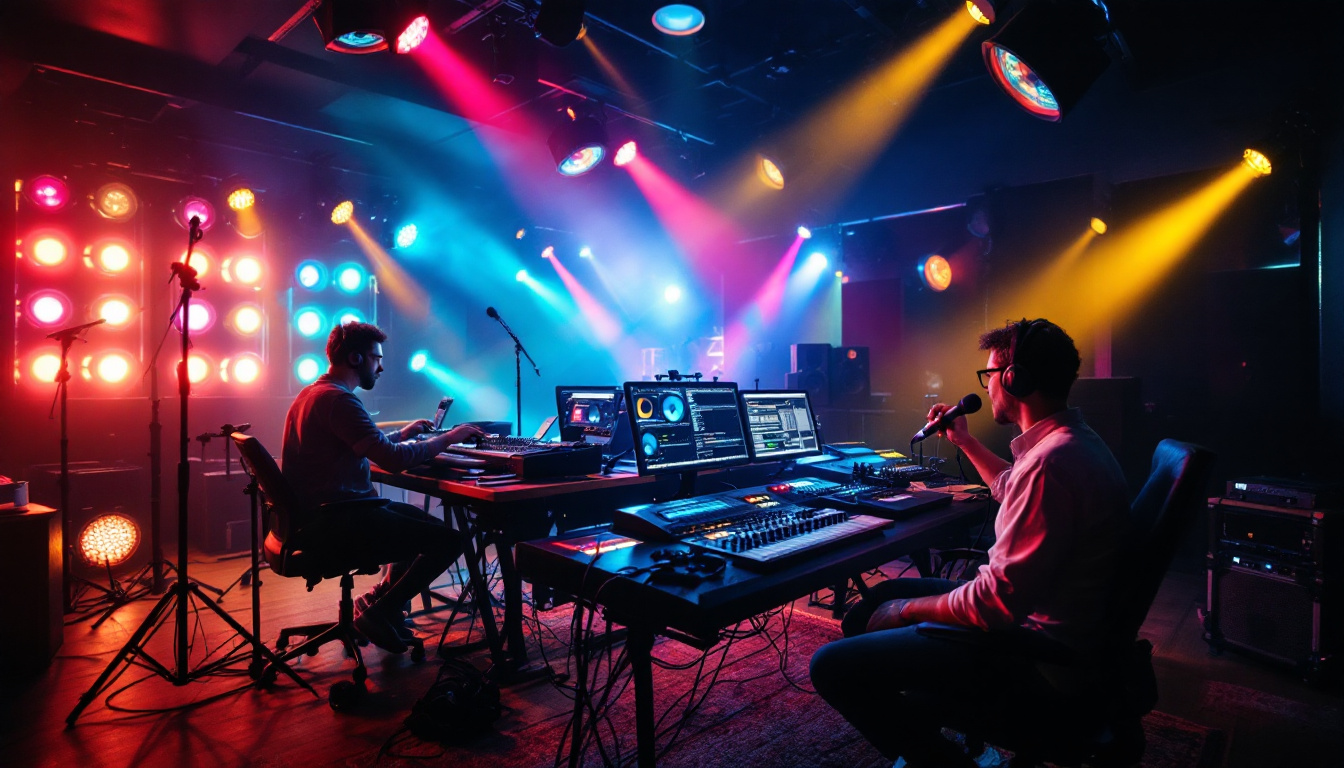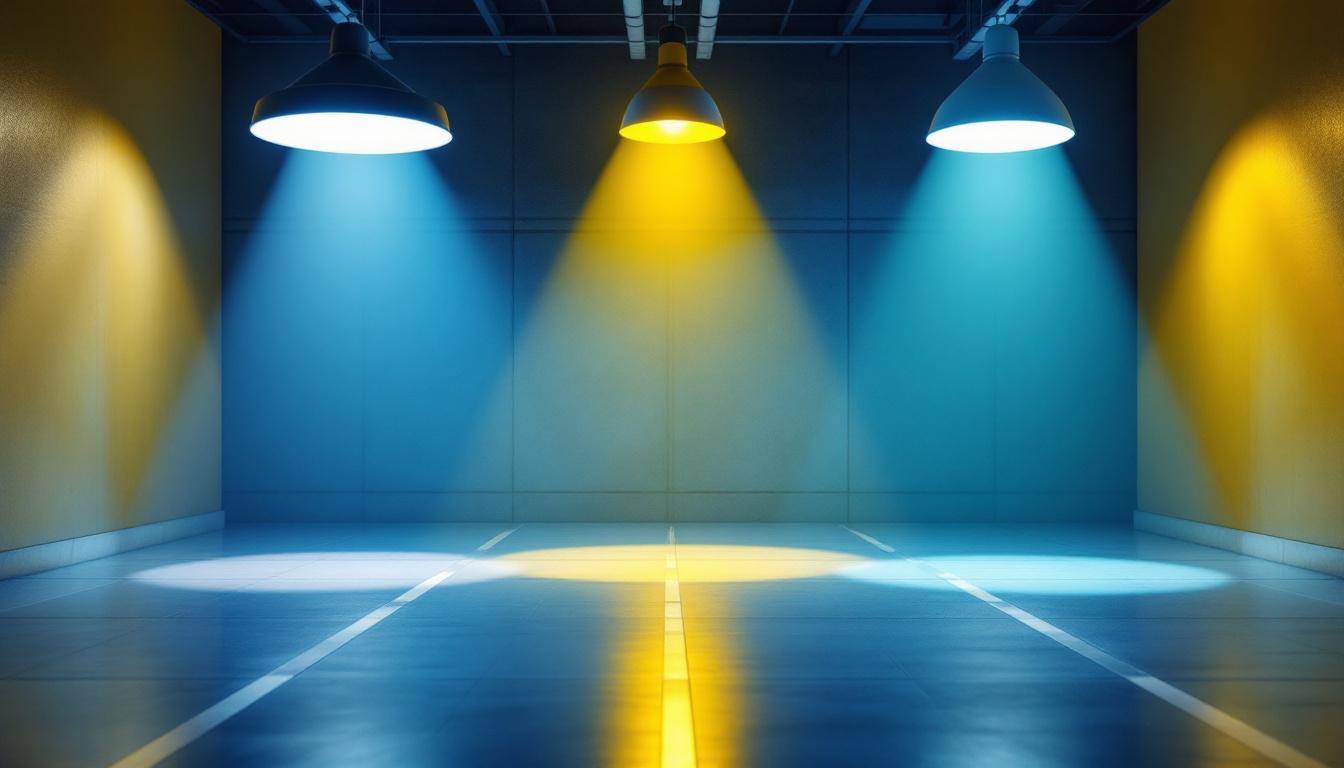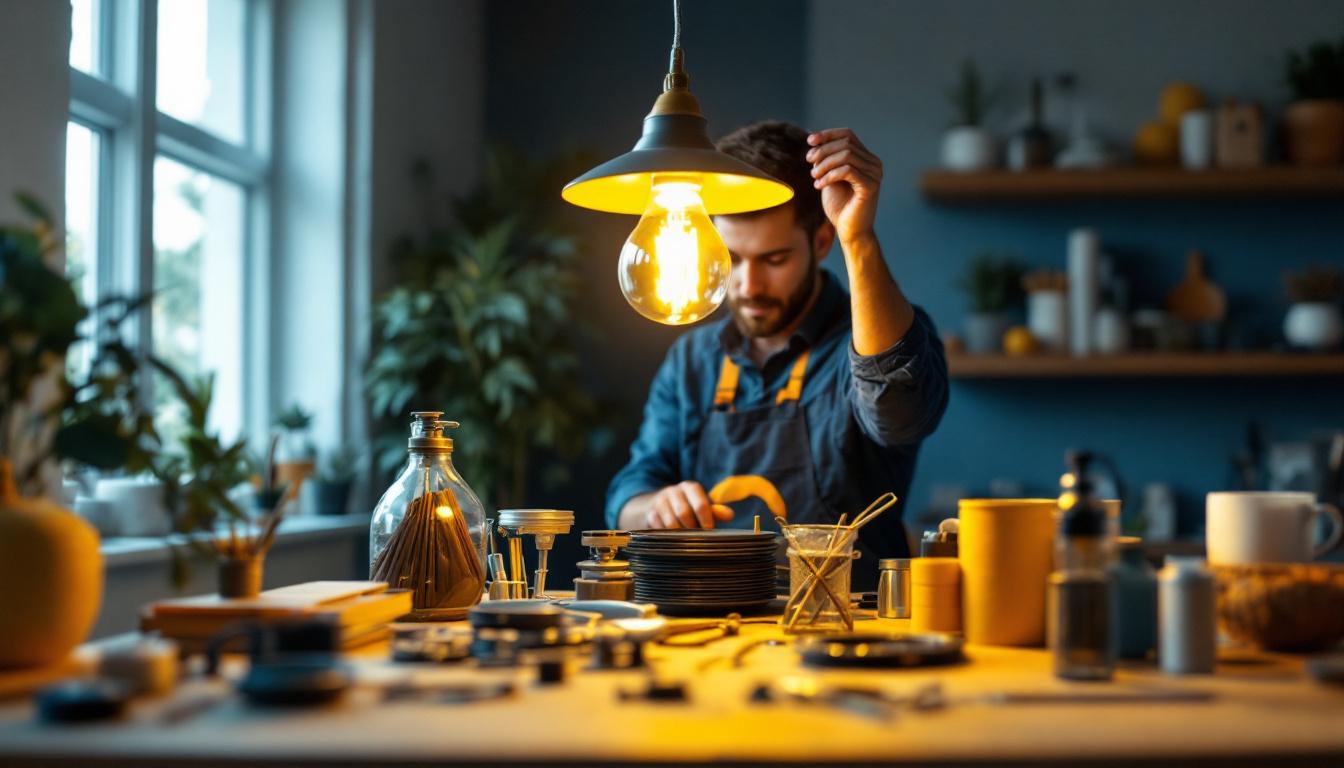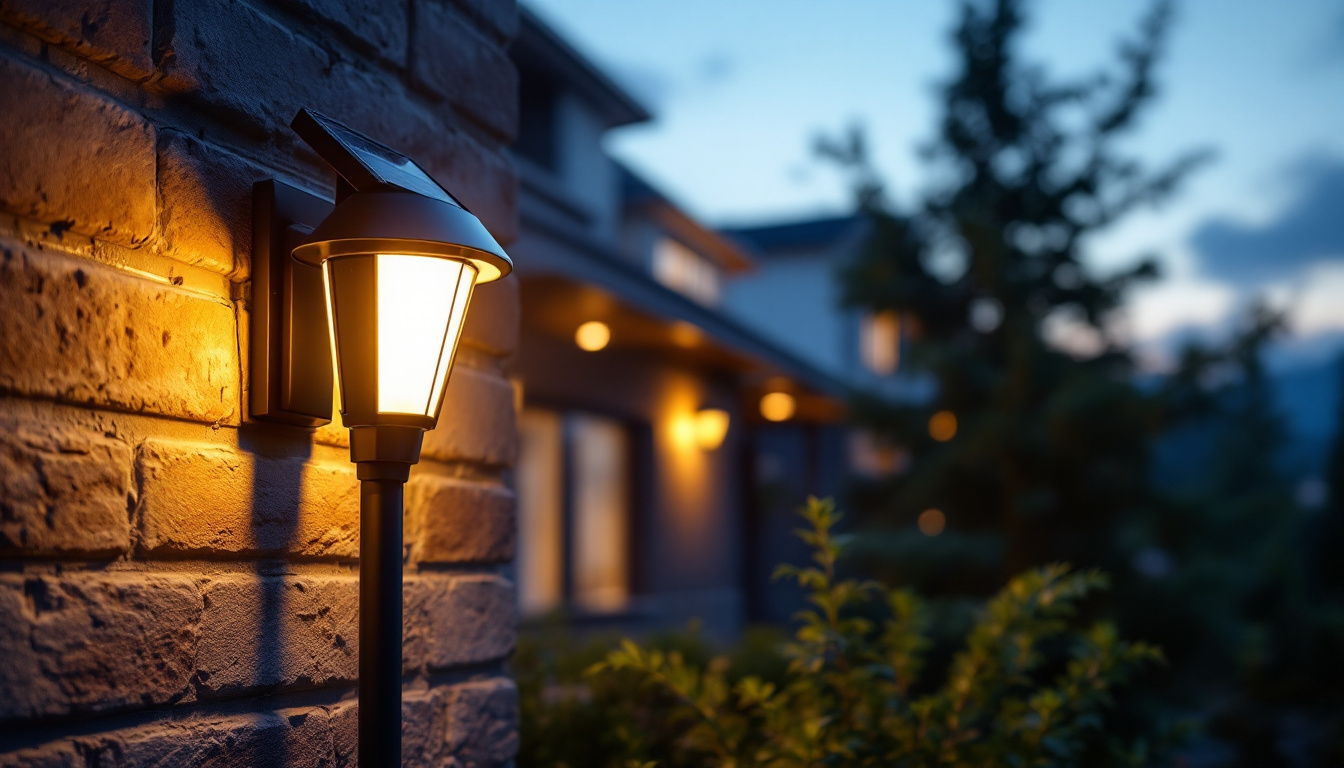
Lighting plays a crucial role in the ambiance and functionality of music studios. For lighting contractors, understanding the nuances of studio lighting can significantly enhance the quality of the spaces they design. This article delves into the essential resources and considerations for mastering music studio lighting.
Lighting in a music studio goes beyond mere visibility; it shapes the creative environment. The right lighting can inspire artists, enhance sound quality, and even affect the mood of the music being created. A well-lit studio can help musicians and producers focus on their work, while poor lighting can lead to distractions and hinder creativity.
Moreover, the lighting design must complement the studio’s acoustic properties. Different types of lighting can influence how sound waves behave within the space, making it imperative for contractors to understand the interplay between light and sound. This understanding is foundational for creating an effective studio environment. For instance, harsh lighting can create unwanted reflections and shadows that may interfere with sound recording, while strategically placed lights can help achieve a balanced acoustic environment.
Additionally, the psychological impact of lighting should not be underestimated. Studies have shown that different colors and intensities of light can evoke various emotional responses. For example, warm tones can create a sense of comfort and relaxation, while cooler tones might stimulate alertness and creativity. Therefore, selecting the right color temperature for the studio lighting can play a crucial role in setting the desired atmosphere for different musical projects.
When considering lighting options for music studios, several types of lighting should be evaluated. Each type serves a specific purpose and can significantly impact the studio’s atmosphere.
Designing lighting for music studios requires a thoughtful approach. Several factors must be considered to ensure that the lighting meets both functional and aesthetic needs.
Color temperature is a critical aspect of lighting design. Measured in Kelvin (K), color temperature affects how colors appear in the studio and can influence the mood of the space. Warmer temperatures (around 2700K to 3000K) create a cozy atmosphere, while cooler temperatures (above 4000K) can enhance focus and alertness.
For music studios, a balanced approach is often best. Utilizing a mix of warm and cool lighting can help create an environment that is both inviting and conducive to productivity. Dimming capabilities can also be beneficial, allowing for adjustments based on the time of day or the specific activity taking place. Additionally, the use of colored LED lights can introduce an element of creativity, enabling artists to set the mood for inspiration or relaxation through dynamic color changes that respond to the music being played.
Integrating a sophisticated lighting control system can elevate the functionality of a music studio. These systems allow for the customization of lighting scenes, enabling contractors to create specific moods for different activities. For instance, a calm, warm light can be set for songwriting sessions, while brighter, cooler light can be used during mixing.
Advanced control systems can also integrate with other studio technologies, such as sound and video equipment, providing a seamless experience for users. This integration is particularly valuable in professional studios where multiple functions occur simultaneously. Furthermore, remote control options, including smartphone apps and voice-activated systems, can enhance user convenience, allowing artists and producers to adjust lighting without interrupting their workflow. Such technology not only streamlines the creative process but also allows for quick adaptations to the lighting environment, ensuring that the studio remains a dynamic space that caters to the evolving needs of its users.
The selection of lighting fixtures is a fundamental aspect of studio design. The right fixtures not only enhance the aesthetics of the space but also ensure optimal functionality.
LED lighting has become increasingly popular in music studios due to its energy efficiency, longevity, and versatility. Unlike traditional incandescent bulbs, LEDs produce less heat and are available in a wide range of color temperatures. This makes them ideal for studios where temperature control is crucial for both equipment and comfort.
Moreover, LEDs can be easily dimmed and controlled, allowing for dynamic lighting changes throughout the day. Traditional lighting, while still used in some settings, often lacks the flexibility and efficiency that modern studios demand.
Proper fixture placement is essential for achieving the desired lighting effects. Overhead lights should be positioned to minimize shadows, while task lighting should be directed towards work areas without causing glare. Accent lighting can be strategically placed to highlight specific features, such as artwork or equipment.
In addition to functional placement, aesthetic considerations should also play a role. Fixtures should complement the studio’s design and contribute to the overall atmosphere. This balance of form and function is key to successful lighting design.
Lighting contractors must also consider the acoustic properties of the studio when designing the lighting system. The materials used in the studio can affect how sound waves travel, and lighting fixtures can inadvertently interfere with this.
Different lighting materials can reflect or absorb sound waves. For instance, hard surfaces may reflect sound, leading to unwanted echoes, while soft materials can absorb sound, enhancing acoustics. When choosing fixtures, it is important to consider how they will interact with the studio’s acoustic treatment.
Additionally, the placement of lighting fixtures should avoid disrupting the studio’s acoustic design. For example, fixtures that hang from the ceiling may create reflections that interfere with sound quality. Collaborating with an acoustician can provide valuable insights into how lighting and sound interact within the space.
In a music studio, noise is a critical concern. Lighting fixtures can produce unwanted sounds, such as buzzing or humming, which can interfere with recordings. Selecting high-quality fixtures designed for quiet operation is essential.
Moreover, proper installation can mitigate noise issues. Ensuring that fixtures are securely mounted and using vibration-dampening materials can help reduce the transmission of sound from the lighting system to the studio environment.
As technology continues to evolve, so do the techniques available for lighting design in music studios. Innovative solutions can enhance both the functionality and aesthetic appeal of these spaces.
Smart lighting technology allows for unprecedented control over studio lighting. These systems can be programmed to adjust automatically based on time of day, occupancy, or specific activities. For example, lights can gradually dim as a session progresses, creating a more immersive experience for the artists.
Additionally, smart lighting can integrate with other studio systems, such as sound and video, providing a cohesive environment. This level of control not only enhances the user experience but can also improve energy efficiency.
Dynamic lighting effects, such as color-changing LEDs, can add an exciting visual element to music studios. These effects can be used to create different moods or themes for various sessions, enhancing the overall creative atmosphere.
Implementing dynamic lighting requires careful planning to ensure that the effects do not distract from the primary focus of the studio. When used thoughtfully, however, these effects can inspire creativity and elevate the artistic experience.
For lighting contractors looking to deepen their understanding of music studio lighting, several resources can provide valuable insights and guidance.
Joining professional organizations related to lighting design can offer access to a wealth of information, including best practices, industry standards, and networking opportunities. Organizations often host workshops, webinars, and conferences that can enhance knowledge and skills.
Many online platforms offer courses specifically focused on lighting design for various applications, including music studios. These courses can provide in-depth knowledge about lighting technology, design principles, and the latest trends in the industry.
Staying updated with industry publications and blogs can help contractors keep abreast of the latest developments in lighting technology and design. These resources often feature case studies, expert interviews, and product reviews that can inform decision-making.
Mastering lighting design in music studios is a multifaceted endeavor that requires a deep understanding of both technical and artistic principles. By considering factors such as color temperature, fixture selection, and acoustic properties, lighting contractors can create environments that inspire creativity and enhance productivity.
Utilizing innovative technologies and staying informed through professional resources will further empower contractors to excel in this dynamic field. Ultimately, the goal is to create spaces where artists can thrive, and the right lighting plays a pivotal role in achieving that vision.
Ready to elevate your music studio projects with the perfect lighting solutions? At LumenWholesale, we specialize in providing contractors with high-quality, spec-grade lighting products at unbeatable wholesale prices. Our extensive selection is designed to meet the highest industry standards, ensuring you get reliable, high-performance lighting that enhances both creativity and productivity. With free shipping on bulk orders, you can access premium lighting at the best value — all without hidden fees or compromises. Transform your music studio lighting designs today and experience the ideal combination of quality, affordability, and convenience. Visit LumenWholesale for Wholesale Lighting at the Best Value.

Discover how clearance lighting fixtures enhance safety in lighting installations, reduce accidents by up to 30%, and ensure compliance—boost your project’s safety today!.

Discover how the Pendant Light Hardware Kit is revolutionizing lighting contractor workflows, boosting efficiency by 30%, and ensuring safer, easier installations.

Discover the transformative impact of solar dusk to dawn lights on the lighting industry.

Explore the critical role of industrial dryer outlets in enhancing efficiency and safety for lighting contractors.